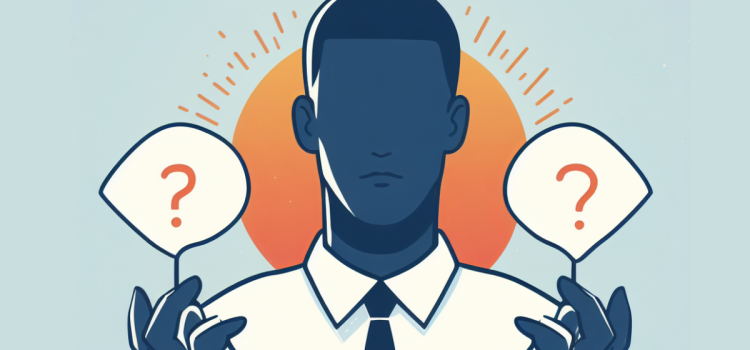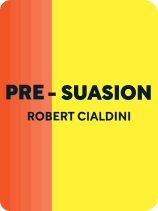

This article is an excerpt from the Shortform book guide to "Pre-Suasion" by Robert Cialdini. Shortform has the world's best summaries and analyses of books you should be reading.
Like this article? Sign up for a free trial here.
Have you ever wondered why certain moments seem to have a bigger impact on our decisions? What is pre-suasion, and how can impact the choice someone else makes?
In his book Pre-Suasion, Robert Cialdini explores the critical moment people experience just before making a decision. He reveals how this instant can significantly shape our choices and explains why it’s so influential. Cialdini’s insights offer valuable strategies for persuasion and decision-making.
Read more to discover Cialdini’s fascinating findings and learn how to captivate the attention of others in that moment before they make a decision.
What Is Pre-Suasion?
What is pre-suasion? Experts in the art of persuasion, whether orators, salespeople, or politicians, often focus on fine-tuning their arguments. But, according to psychologist Robert Cialdini, this approach fails to consider another key component of persuasion—what happens before we begin conveying our argument. Cialdini argues that, to make our audience receptive to our message, we must optimize the moments before persuasion.
Cialdini discusses the critical moment in the pre-suasive process—the moment immediately before your audience makes a decision. We’ll outline the two primary reasons why such moments are critical to the decision-making process: First, because people intuitively believe these moments to be very important; and second, because people think the information they encounter just before making a decision is causally relevant to their decisions.
(Shortform note: Because Pre-Suasion became a bestseller and Cialdini has given many talks about it, the concept of “pre-suasion” has become increasingly mainstream. For example, new studies have tested the efficacy of pre-suasive techniques in mail marketing, finding them slightly less effective than techniques related to social exchange. Researchers have also applied the notion of pre-suasion to specific industries such as motorcycle sales.)
The Importance of the Moment Before Making a Decision
According to Cialdini, the key to pre-suasion lies in the insight that the most salient factors immediately before people make a decision have a disproportionate impact on that decision. He cites several scientific studies suggesting that people respond differently to requests for assistance depending on the prompt they answer immediately beforehand.
For example, he points to one study where subjects were randomly split into two groups: One was asked if they were unhappy with their social lives, while the other was asked if they were happy with their social lives. Participants who were asked whether they were unhappy were 375% more likely to respond that they were—illustrating that simply using the word “happy” makes people more aware of the positive aspects of their social relationships, while using the word “unhappy” makes them more aware of the negative aspects.
(Shortform note: In the realm of professional polling, experts acknowledge that how a question is phrased can massively influence the results, just like the above study suggests. For this reason, pollsters spend substantial amounts of time working on questionnaire development, the practice of designing questionnaires and polls that don’t bias respondents’ answers. This includes deciding whether to ask open-ended or closed-ended questions, since respondents will often offer different responses to these two types of questions.)
Why Are These Moments Pivotal?
Cialdini admits that these studies don’t show why the moments right before a decision have an outsize influence. To fill that gap, he argues that the objects of attention influence decisions for two reasons: People naturally believe that the objects of their attention are important and causally relevant to their decisions.
Reason #1: The Objects of Attention Are Important
First, Cialdini points to several studies illustrating that people find the current objects of their attention more important than those outside of their attention. For example, he describes how people’s perceptions of the importance of 9/11 changed with the amount of media coverage. In 2011, a research team asked people to name especially impactful historical events in the last 70 years. Two weeks before the tenth anniversary of 9/11, about 30% of respondents named 9/11 as one such event—but right around the anniversary, amid a flurry of media attention, a full 65% of respondents did. Two weeks later, that figure had dropped back to 30%. In other words, as the events of 9/11 became more present in respondents’ minds, they became more likely to deem them important.
(Shortform note: As economist Robert Shiller explains in Irrational Exuberance, the media’s influence over people’s views can also impact the stock market by drawing attention to market swings. In other words, the media doesn’t passively report on news about the stock market; it actively shapes the market by causing investors to overestimate the importance of various factors. For example, if the media reported on an underwhelming earnings report from Apple, investors might assign this news too much importance, causing them to overreact and impulsively sell Apple stock.)
Reason #2: The Objects of Attention Play a Causal Role
Building on his claim that individuals unconsciously assign high importance to things they’re paying attention to, Cialdini argues that people also believe that the objects of attention are causally impactful, meaning they’re relevant to the decision-making process.
To illustrate, he points to experiments in which participants observed a scripted conversation of a couple deliberating about which movie to see, with some participants seeing only the man’s face and others seeing only the woman’s. These participants consistently believed that the person whose face they saw drove the choice—if participants saw the man’s face, they believed he drove the choice to see the movie, whereas those who saw the woman’s face believed she drove that choice.
(Shortform note: In Thinking, Fast and Slow, Kahneman argues that our tendency to make causal judgments based on superficial information (like whose face we’re observing) is a byproduct of System 1 thinking—our mind’s automatic mode of thinking that operates without conscious effort. System 1 thinking quickly creates coherent narratives about the world, making us liable to mistakenly assume causation between two events that are merely correlated.)
| Priming: A Controversial Foundation for Cialdini’s Arguments Pre-Suasion relies heavily on the notion of priming, made popular by Daniel Kahneman’s 2011 book Thinking, Fast and Slow. As Kahneman relates, priming is when the words and environments we’re exposed to subconsciously impact our behavior. For example, Kahneman discusses one study in which half of the participants were exposed to words related to the elderly—such as “Florida,” “bald,” or “forgetful”—while other participants were exposed to a random set of words. After this exposure, those “primed” with words about the elderly walked significantly slower than those exposed to random words; according to the researchers, this was evidence of priming. In Pre-Suasion, Cialdini introduces priming as a useful tool to pre-suade an audience. However, scientists have been unable to replicate any of the studies that allegedly show the impact of priming, and Kahneman admitted afterward that he leaned too heavily on faulty studies. For this reason, Cialdini’s conclusions drawn from the many studies about priming throughout Pre-Suasion should be taken with caution. |

———End of Preview———
Like what you just read? Read the rest of the world's best book summary and analysis of Robert Cialdini's "Pre-Suasion" at Shortform.
Here's what you'll find in our full Pre-Suasion summary:
- The moment when people are particularly susceptible to influence
- The first step you should take when you want to persuade someone
- Why a brilliant argument isn’t enough to convince some people






